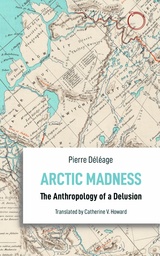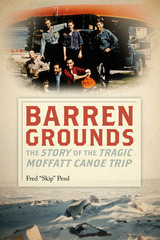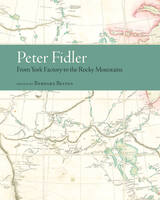3 books about Northwest, Canadian

Arctic Madness
The Anthropology of a Delusion
Pierre Déléage
HAU, 2019
The French missionary-linguist Émile Petitot (1838–1916) spent twenty years near the Arctic Circle in Canada, publishing numerous works on First Nations languages and practices. Over time, however, he descended into delirium and began to summon imaginary persecutions, pen improbable interpretations of his Indigenous hosts, and burst into schizoid fury. Delving into thousands of pages in letters and memoirs that Petitot left behind, Pierre Déléage has reconstructed the missionary’s tragic story. He takes us on a gripping journey into the illogic and hyperlogic of a mind entranced with Indigenous peoples against the backdrop of repressive church policies and the emergent social sciences of the nineteenth century. Apocalyptic visions from the Bible and prophetic movements among First Nations peoples merged in the missionary’s deteriorating psyche, triggering paroxysms of violence against his colleagues and himself. Whoever wishes to understand the contradictions of living between radically different societies will find this anthropological novella hard to put down.
[more]

Barren Grounds
The Story of the Tragic Moffatt Canoe Trip
Skip Pessl
Dartmouth College Press, 2014
In 1955 Arthur Moffatt led an expedition consisting of young college students and recent graduates to the Inuit lands of Nunavut, Canada, to follow the path of the 1893 Tyrrell expedition and to film and photograph the group’s progress. The expedition, a 900-mile epic journey across the Barren Lands of Arctic Canada, has stirred controversy and criticism for over fifty years. The trip has been variously described as “the pioneering venture in modern recreational canoe travel” and as “an excellent example of how not to conduct a canoe trip.” Delays took their toll on the adventurers, exhausted by the seemingly endless paddling through unknown rivers and lakes, the trek across the windswept tundra, and torment by voracious insects. Threatened with diminishing food reserves and increasingly harsh weather, the members of the expedition were forced to travel with greater speed and less caution, and ultimately a fatal mistake was made. Two of the canoes capsized, dumping four men into the frigid waters. Moffatt, the leader, died of exposure. It took the survivors ten days of arduous travel with minimum food and equipment to reach the safety of the Hudson’s Bay Company post. Barren Grounds features passages from the journals of two young Moffatt party members and excerpts about the 1893 expedition of Joseph Burr Tyrrell, along with entries from the journal of Art Moffatt himself. Part cautionary tale, part nail-biting adventure, the book will appeal to outdoorsmen and armchair adventurers alike.
[more]

Peter Fidler
From York Factory to the Rocky Mountains
Barbara Belyea
University Press of Colorado, 2020
In 1792–93 Peter Fidler surveyed the Hudson’s Bay Company’s river and overland routes west from York Factory. He traveled with a fur brigade up the Hayes and Saskatchewan Rivers and then spent the winter months with a Piikani band who hunted buffalo in the Rocky Mountain foothills. Fidler kept precise journals that make it possible to follow the traders’ passage over a lake-strewn landscape and across the plains. The journal texts combine astronomical observations, notation of distances and directions, small sketch maps, and verbal descriptions. Peter Fidler: From York Factory to the Rocky Mountains presents two of Fidler’s survey journals edited and extensively annotated by historian Barbara Belyea from manuscripts in the Hudson’s Bay Company Archives.
The two journals—“From York Factory to Buckingham House” and “From Buckingham House to the Rocky Mountains”—detail Fidler’s travels over a period of nine months. They include remarks on fur trade history, organization of the inland brigade, three distinct geographical regions, and the daily life of a Plains nation. Belyea’s introduction and ample notes provide insight into the way geographic, specifically cartographic, information was noted in the journals, with additional information on industry trading techniques, traders’ economic decisions, broad changes in regional social and economic conditions, and interactions with indigenous peoples.
Fidler’s journals are an exceptional record of the fur trade’s western expansion and the daily life of a Plains nation at the height of its power and prosperity. With its rich analysis of primary source documents and painstaking reproduction of historical trade routes, Peter Fidler: From York Factory to the Rocky Mountains will be of great value to students and scholars in the fields of fur trade studies, cartography, travel literature, and Canadian history, as well as general readers interested in westward expansion, exploration, commerce, and indigenous-colonial relations.
The two journals—“From York Factory to Buckingham House” and “From Buckingham House to the Rocky Mountains”—detail Fidler’s travels over a period of nine months. They include remarks on fur trade history, organization of the inland brigade, three distinct geographical regions, and the daily life of a Plains nation. Belyea’s introduction and ample notes provide insight into the way geographic, specifically cartographic, information was noted in the journals, with additional information on industry trading techniques, traders’ economic decisions, broad changes in regional social and economic conditions, and interactions with indigenous peoples.
Fidler’s journals are an exceptional record of the fur trade’s western expansion and the daily life of a Plains nation at the height of its power and prosperity. With its rich analysis of primary source documents and painstaking reproduction of historical trade routes, Peter Fidler: From York Factory to the Rocky Mountains will be of great value to students and scholars in the fields of fur trade studies, cartography, travel literature, and Canadian history, as well as general readers interested in westward expansion, exploration, commerce, and indigenous-colonial relations.
[more]
READERS
Browse our collection.
PUBLISHERS
See BiblioVault's publisher services.
STUDENT SERVICES
Files for college accessibility offices.
UChicago Accessibility Resources
home | accessibility | search | about | contact us
BiblioVault ® 2001 - 2024
The University of Chicago Press









